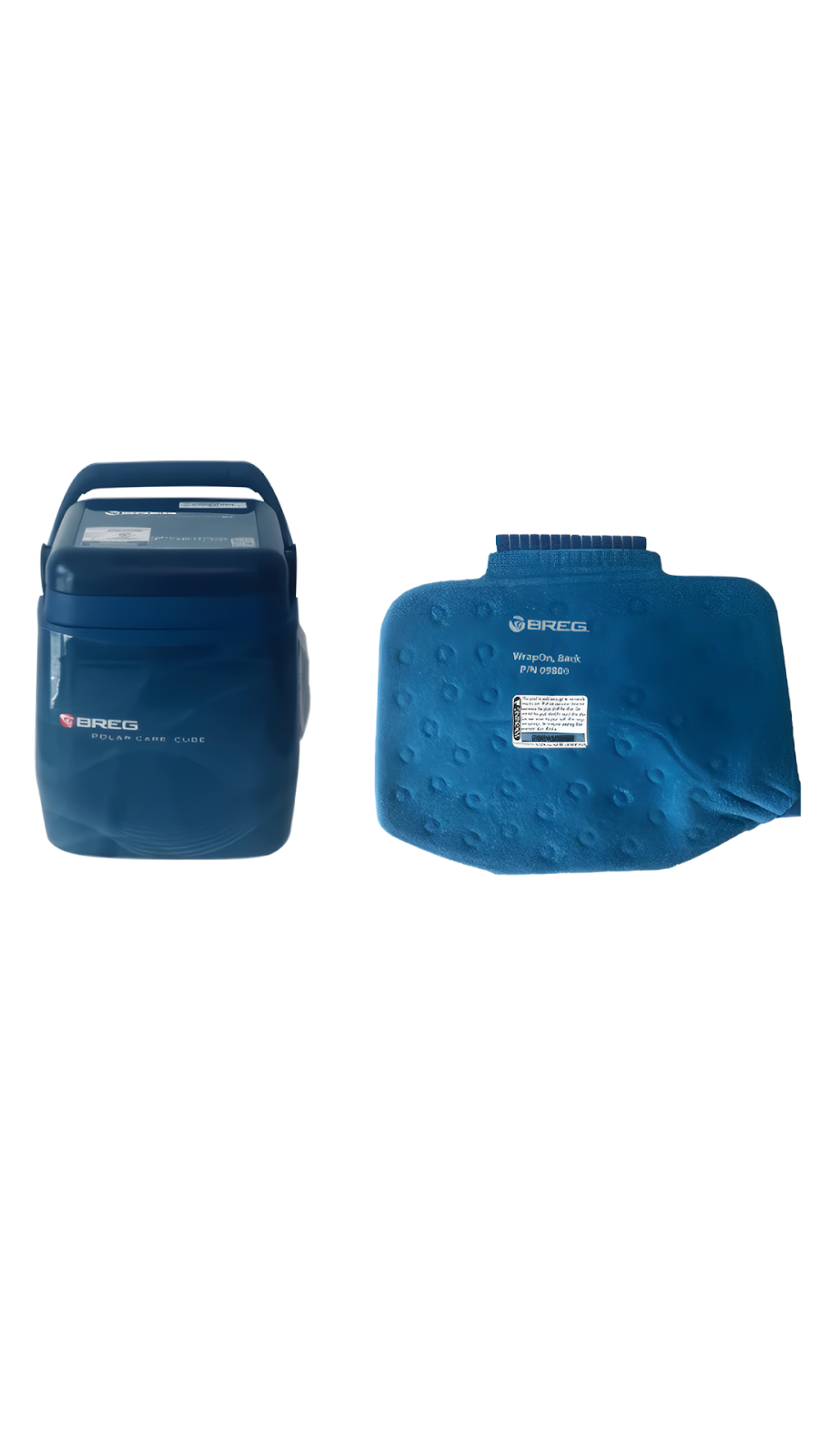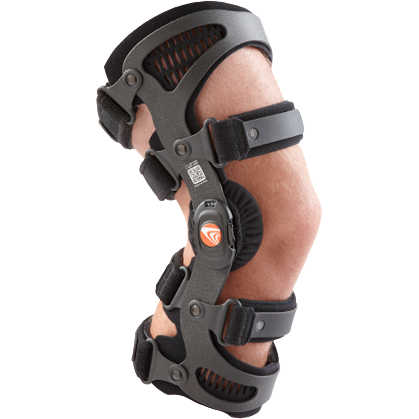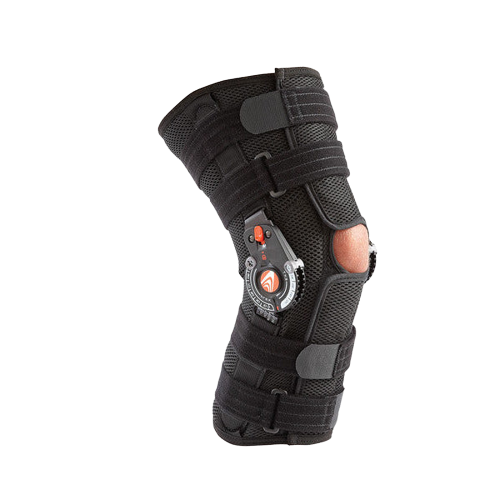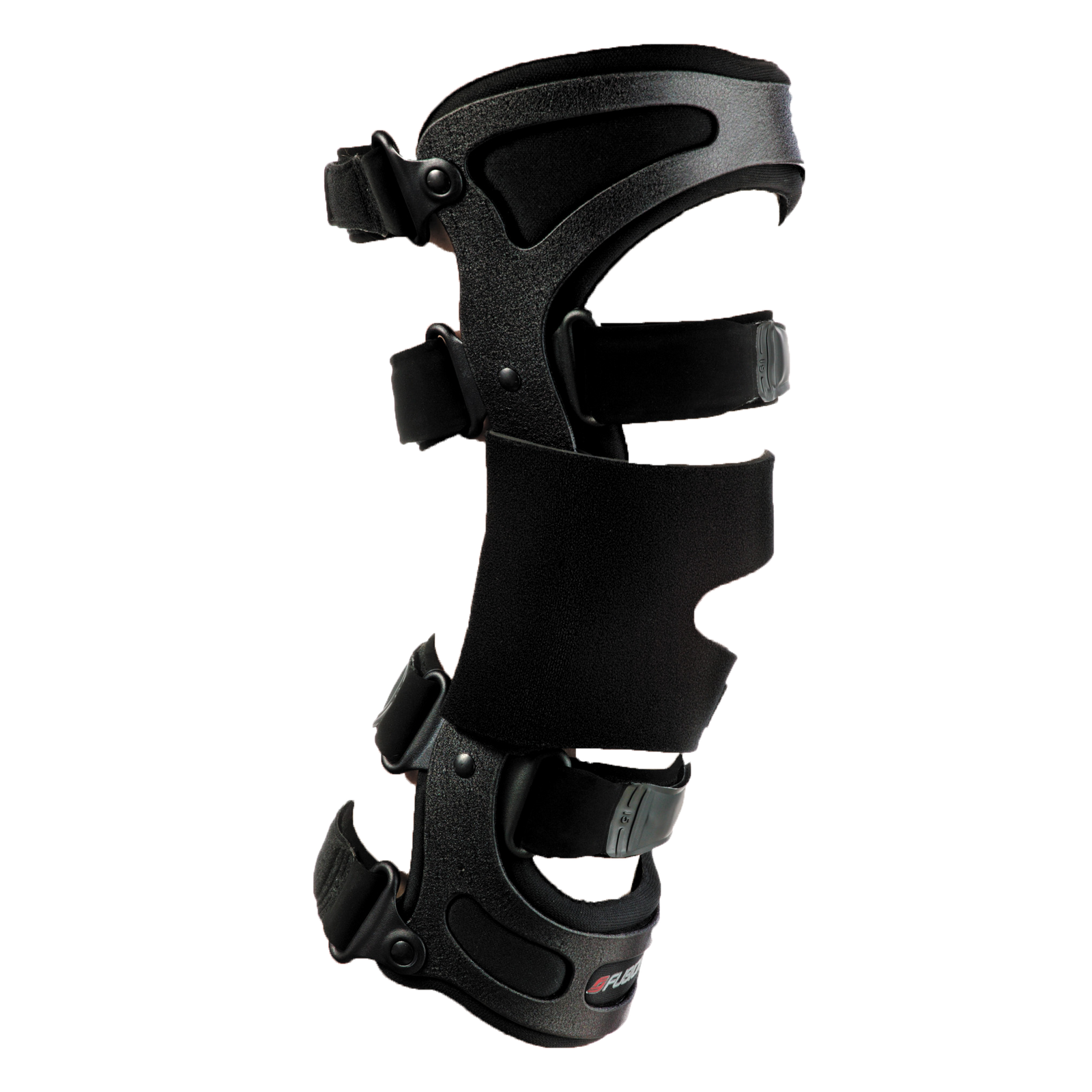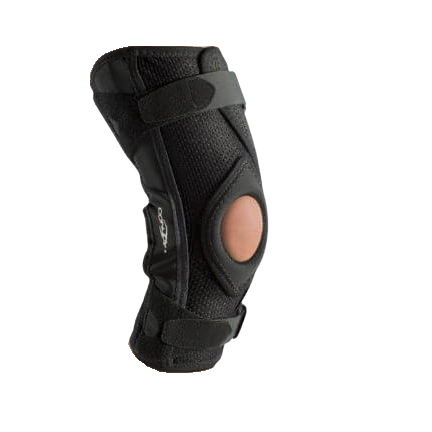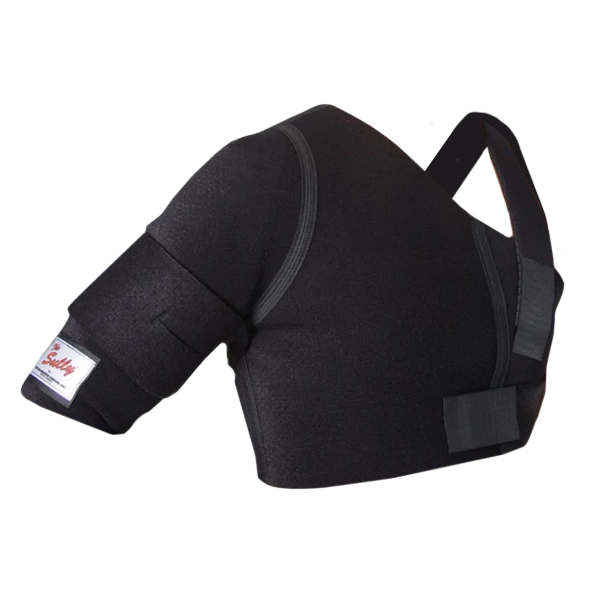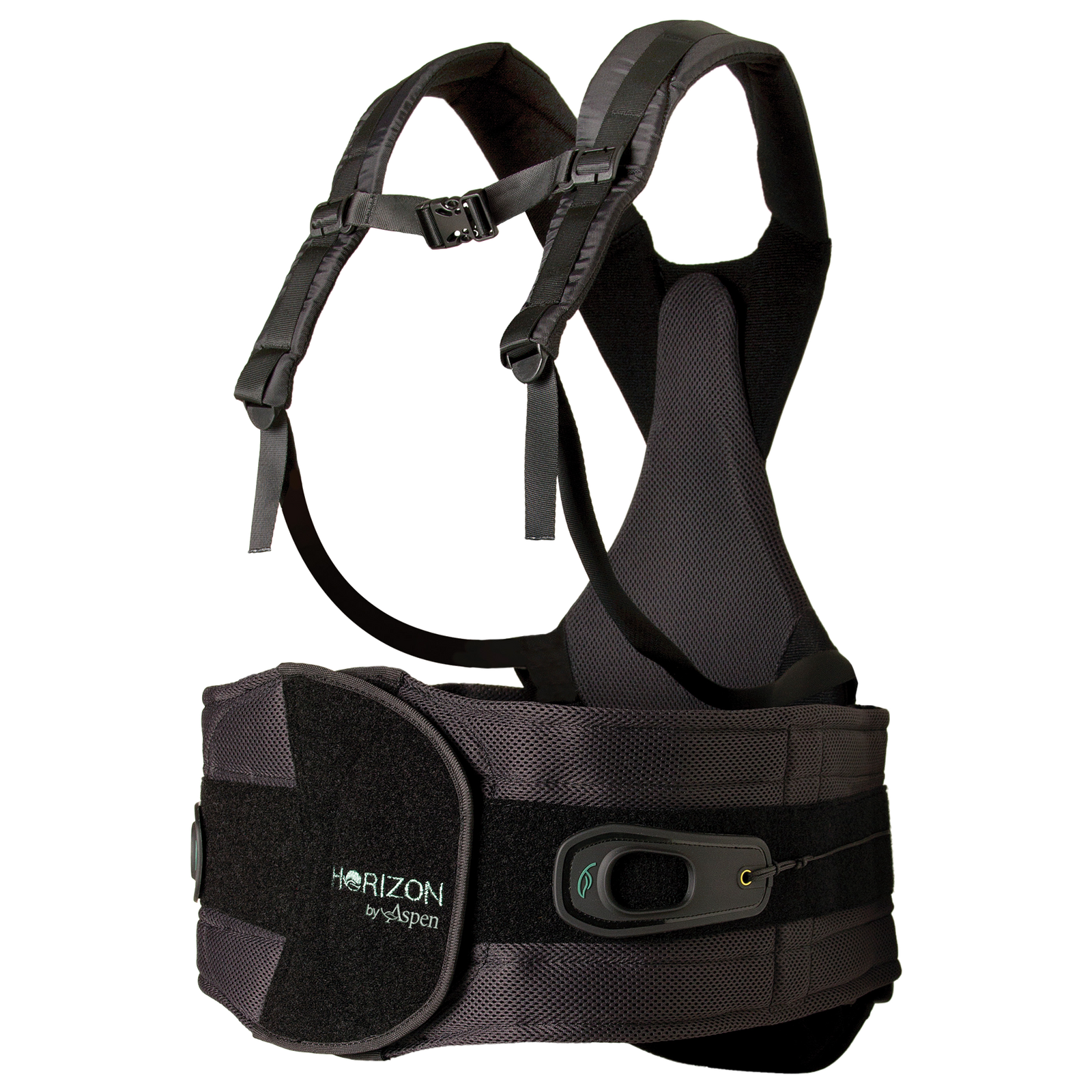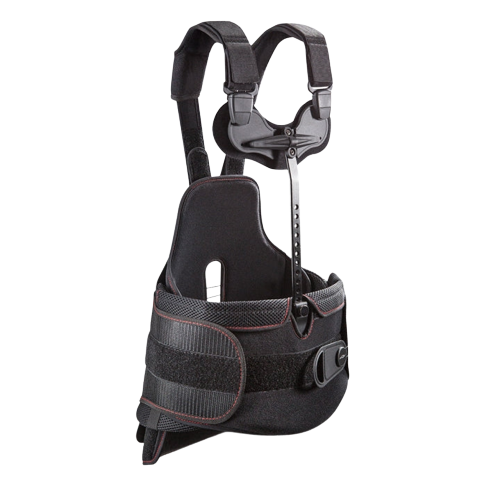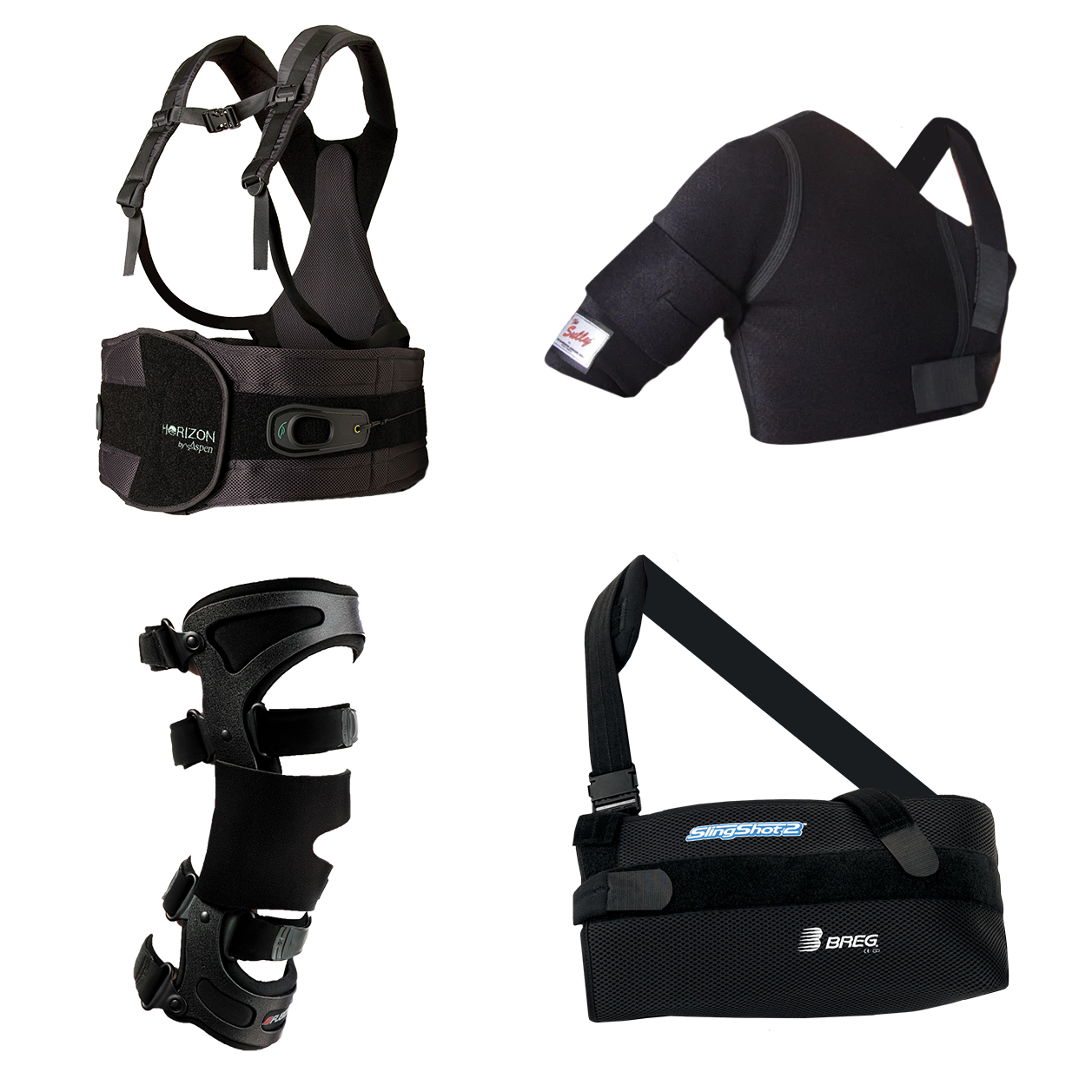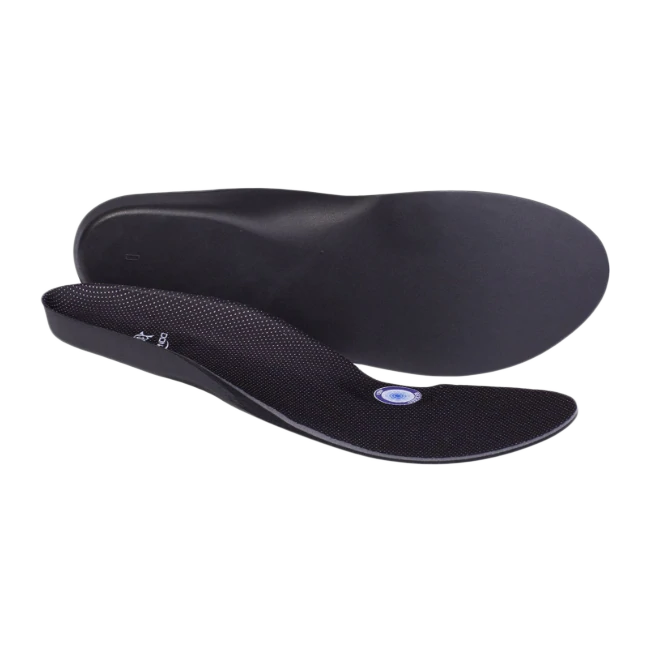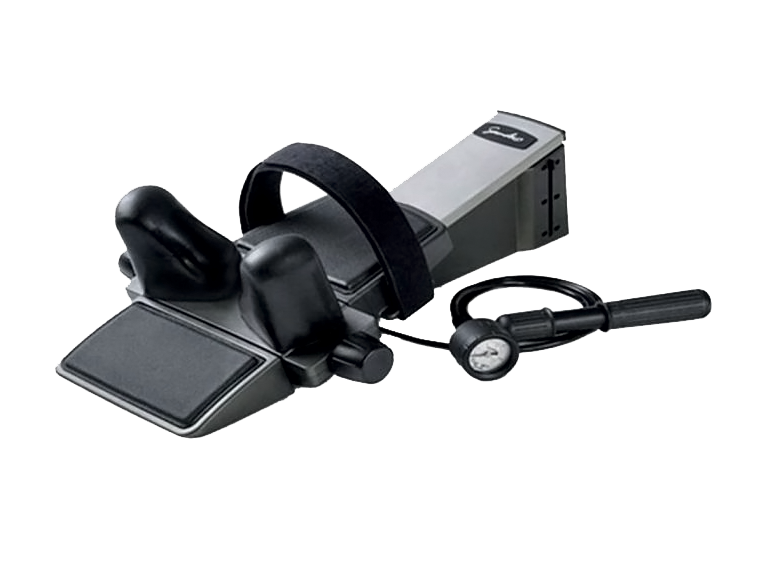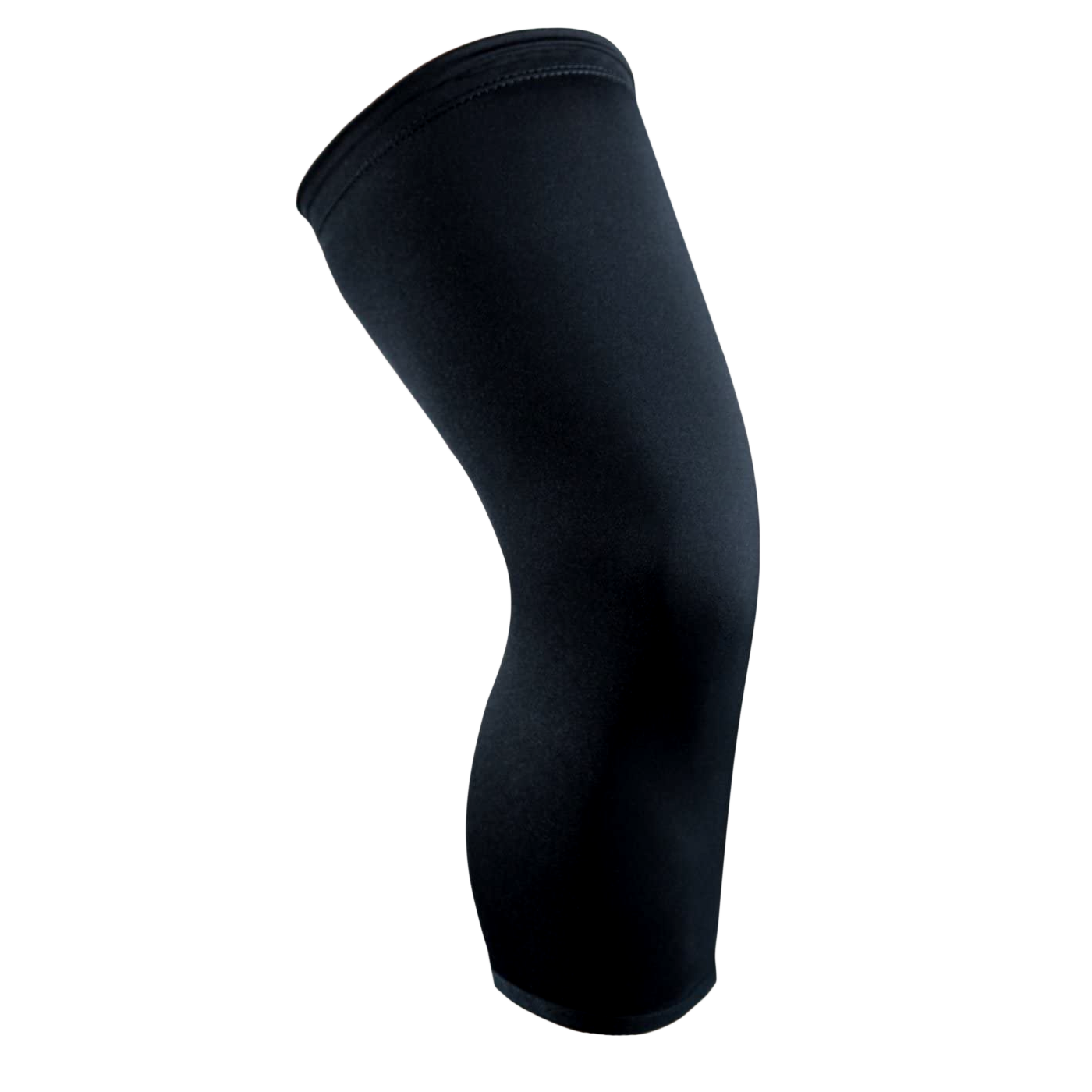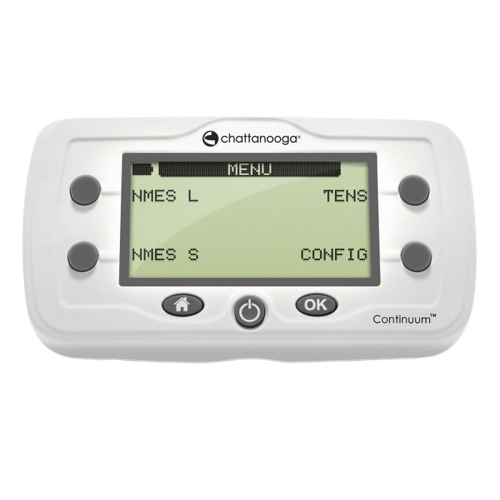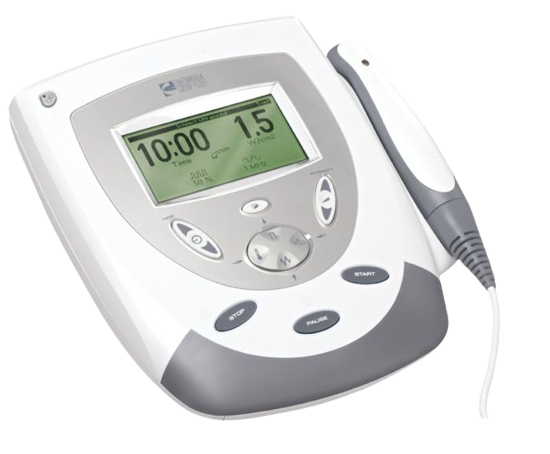
Key Takeaways:
- Ice Packs Are a Powerful Tool for Knee Pain Management: Ice therapy effectively reduces swelling and pain associated with various knee injuries, accelerating recovery and improving comfort.
- Simple and Effective Application: Applying ice packs is straightforward and can be performed at home by anyone. By following proper application techniques, you can maximize the benefits of ice therapy while minimizing risks.
- Benefits a Wide Range of Knee Injuries: Ice therapy benefits various knee conditions, including ligament injuries, meniscus tears, post-surgery recovery, tendinitis, and bursitis.
At OrthoBracing, we understand the challenges of recovery, so we’ve curated top-quality ice packs designed to target knee pain specifically. Recovering from a knee injury can be a frustrating journey. The swelling, pain, and limited mobility can disrupt your daily life and slow your progress toward feeling like yourself again. Ice therapy has long been a trusted method for reducing inflammation and managing discomfort, and with the right tools, it’s easier and more effective than ever.
In this article, we’ll explore how ice packs can speed up your healing process, ease discomfort, and help you get back on your feet faster. Whether recovering from surgery, a sports injury, or everyday wear and tear, discover the benefits of ice therapy and find the best options to support your journey.
Understanding Knee Injuries: A Quick Overview
Knee injuries are a common concern, affecting millions of individuals worldwide, from athletes to the elderly. The knee joint, one of the body's most complex and heavily utilized joints, is susceptible to various injuries and conditions. These can stem from acute trauma, such as a fall, collision, or sudden twisting motion, or from chronic issues like arthritis, wear and tear over time, or overuse injuries.
Acute knee injuries often involve ligaments (such as the ACL or MCL), menisci (cartilage), or the kneecap itself. Symptoms may include pain, swelling, instability, and difficulty bearing weight or moving the knee. On the other hand, chronic knee problems may develop gradually and result in stiffness, aching, and limited motion range.
Understanding the nature of knee injuries is crucial in adopting the appropriate recovery and rehabilitation strategies. In the early stages of recovery, managing pain and swelling becomes a pivotal aspect of facilitating healing and regaining function. This is where the role of an ice pack for knee recovery becomes invaluable.
How Ice Packs Work: The Science Behind The Relief
Understanding the science behind how ice packs work can give patients a clearer insight into why they're an essential post-surgery recovery tool.
The Cryotherapy Principle
Cryotherapy, or cold therapy, involves applying a cold object (in this case, an ice pack) to the affected area. The cold temperature causes the blood vessels in the area to constrict, a process known as vasoconstriction. This constriction decreases blood flow to the area, which can significantly reduce swelling and inflammation. Moreover, this process also slows down the conduction of nerve impulses, which can diminish the feeling of pain.
The Reduction Of Swelling And Inflammation
Swelling, or edema, is the body's natural response to injury, but excessive swelling can delay healing and cause additional pain. Applying an ice pack to the knee reduces blood flow, helping minimize fluid accumulation in the knee joint and surrounding tissues. This alleviates discomfort and contributes to a more efficient healing process by preventing the area from becoming overly inflamed.
Pain Relief Processes
The sensation of cold provided by an ice pack also plays a crucial role in reducing pain. As the skin's and underlying tissues' temperature drops, nerve activity in the area decreases. This leads to a numbing effect that provides temporary relief from pain. This pain relief is vital during the early stages of knee recovery when discomfort is most intense. It allows patients to participate more actively and comfortably in rehabilitation exercises, crucial for regaining strength and mobility.
The Key Benefits Of Ice Therapy For Knee Injuries
Ice therapy is a cornerstone in managing and rehabilitating knee injuries, particularly post-orthopedic surgery. Its benefits stem from its simplicity and effectiveness in managing pain and facilitating recovery. Here's why an ice pack for the knee is a crucial part of your recovery toolkit:
Reduction Of Swelling
Swelling is the body's natural response to injury, but excessive swelling can cause discomfort and prolong recovery. Ice therapy helps by constricting blood vessels, reducing blood flow to the affected area, and thus minimizing swelling. This is vital in the first 48 hours post-injury or surgery when swelling tends to be at its peak.
Pain Relief
Ice packs numb the injured area, which can provide significant pain relief. The cold restricts blood vessels and decreases nerve activity, which reduces pain signals sent to the brain. This non-pharmacological approach to pain management is both safe and effective, especially for individuals who are looking for alternatives to pain medication.
Decrease In Muscle Spasms
Ice therapy can also effectively reduce muscle spasms, a common and painful symptom of knee injuries. Muscle spasms are involuntary contractions of the muscles and can contribute to discomfort. Cooling the area with an ice pack can help relieve these spasms.
Expedited Recovery Process
Ice therapy can reduce swelling and pain, leading to a more comfortable and potentially faster recovery process. This method allows patients to start rehabilitative exercises earlier, a crucial step in regaining strength and mobility in the knee.
Convenience And Accessibility
Ice packs for knee recovery are a straightforward, noninvasive treatment that can be easily administered at home. This makes it an accessible option for many patients, especially compared to other, more complicated treatment modalities.
Step-By-Step Guide: How To Apply An Ice Pack Effectively
Applying an ice pack for knee recovery isn't just about placing a cold object against your skin. It involves a careful process to ensure the treatment is safe and effective. This guide will walk you through the steps to apply an ice pack effectively, helping you to maximize the pain relief and swelling reduction benefits while minimizing any potential skin damage or other risks.
Step 1: Choose The Right Ice Pack
Not all ice packs are created equal. Select a high-quality ice pack from reputable brands.
Step 2: Wrap The Ice Pack
Direct application of ice onto the skin can cause frostbite and damage tissues. Therefore, wrapping the ice pack in a thin cloth or using a cover if one comes with your ice pack is crucial. This barrier protects your skin while effectively allowing cold therapy to reach the knee area.
Step 3: Position The Ice Pack
Carefully position the wrapped ice pack around the knee area. If your ice pack is flexible, mold it around your knee for full coverage. Ensure the pack is snug but not too tight, as excessive pressure can lead to discomfort and reduce blood flow to the area, which is counterproductive to healing.
Step 4: Time The Application
The duration of ice pack application is critical for safety and efficacy. A general guideline is to apply the ice pack for 15-20 minutes every hour for the first 24-48 hours post-injury or as directed by a healthcare professional. Avoid exceeding this time to prevent skin damage and other complications.
Step 5: Monitor Your Skin
While applying the ice pack, regularly check your skin for signs of irritation or damage, such as excessive redness, numbness, or a tingling sensation. If any of these signs occur, remove the ice pack immediately and allow your skin to return to its normal temperature and color before reapplying.
Step 6: Repeat As Necessary
Repeat the application process as necessary, following the recommended timing and frequency. Consistent, careful application of cold therapy can significantly aid your knee recovery, effectively reducing swelling and pain.
Common Knee Injuries That Benefit From Ice Therapy
Here, we discuss several common knee injuries that can benefit considerably from applying an ice pack for knee recovery.
Ligament Injuries
Ligament injuries such as ACL (anterior cruciate ligament) or MCL (medial collateral ligament) tears are commonplace, especially among athletes. These types of injuries typically result from sudden stops or changes in direction, leading to severe pain and instability. Implementing ice therapy immediately after the injury can reduce inflammation and relieve pain, making it a critical step in the early stages of recovery.
Meniscus Tears
The meniscus acts as a cushioning pad between the bones in the knee joint. Tears often occur from twisting movements when the foot is planted, but the knee turns, making this type of injury prevalent among individuals engaged in sports. Applying an ice pack to the knee can numb the pain and decrease swelling, essential for reducing discomfort and promoting healing in the affected area.
Knee Surgery Recovery
An ice pack for the knee becomes an indispensable tool in the patient's recovery arsenal after surgery. Knee surgeries, such as arthroscopy, meniscus repairs, and ligament reconstructions, can leave the area swollen and tender. Ice therapy is crucial in minimizing these symptoms, enhancing the healing process, and helping patients regain mobility faster.
Tendinitis
Tendinitis in the knee, known as Patellar Tendinitis, results from overuse and is characterized by inflammation of the tendons connecting the knee cap to the shinbone. This condition is often referred to as "Jumper’s Knee." Regular ice pack application can relieve the sharp pains associated with tendinitis and reduce inflammation, aiding in a quicker return to normal activities.
Bursitis
Another condition that benefits from ice therapy is bursitis, an inflammation of the bursae, the fluid-filled sacs that cushion the knee joint. Bursitis can cause significant pain and swelling around the knee area. Through ice packs, patients can experience immediate pain relief and decreased swelling, facilitating a smoother and more comfortable recovery process.
Additional Tips For Faster Knee Recovery
While using an ice pack for knee pain is essential for recovery after orthopedic surgery, several additional strategies can significantly enhance the healing process. Incorporating these practices and applying cold therapy can create a comprehensive recovery plan.
Maintain A Healthy Diet
Nutrition plays a pivotal role in healing. Consuming foods rich in vitamins and minerals, especially those containing vitamins C, D, and calcium, can help accelerate bone and tissue repair. Adding anti-inflammatory foods such as berries, fatty fish, and leafy green vegetables can also reduce swelling, aiding knee recovery.
Stay Active
While it might seem counterintuitive, staying active within the limits of your doctor's recommendations is crucial for knee recovery. Gentle exercises and stretches designed for post-surgery rehabilitation can increase flexibility, strengthen the muscles surrounding the knee, and improve the range of motion.
Follow A Structured Rehabilitation Plan
Adhering to a specialized rehabilitation program prescribed by your healthcare professional is essential. This plan, tailored to your specific needs, encompasses various exercises, stretches, and, sometimes, supportive orthopedic devices. These programs are designed to gradually increase the knee's capability without risking further injury.
Stay Hydrated
Hydration is key to overall health and is particularly important during recovery. Drinking plenty of fluids helps maintain optimal joint lubrication, which is beneficial for knee movement and aids overall healing.
Ensure Adequate Rest
While staying active is essential, balancing it with sufficient rest is equally crucial. Your body heals and repairs itself during sleep, making quality rest an integral part of a speedy recovery. Ensure you get adequate sleep, and don't hesitate to take short rests throughout the day as needed.
Use Supportive Gear For Long-Term Relief
Incorporating supportive orthopedic gear into your recovery process can make a world of difference. Products like braces, compression sleeves, and supports help stabilize the knee, reduce stress on the joint, and enhance comfort during recovery. For instance, the NuFabrx Pain Relief Knee Sleeve offers embedded medicine and compression technology to deliver targeted pain relief while improving mobility.
This combination of cold therapy, proper supportive gear, and consistent recovery practices can help you bounce back stronger and faster.
Choosing The Right Ice Pack For Your Needs
Here’s a guide to assist you in making an informed decision that caters to your needs.
- Type of Ice Pack: There are various ice packs, including gel packs, bead packs, and traditional ice bags. Gel packs often provide a consistently cold temperature and can be particularly effective for knee recovery due to their ability to conform to the knee's shape.
- Size and Shape: The size and shape of the ice pack are paramount. An ice pack for knee recovery should ideally cover the entire knee area to ensure effective treatment.
- Cold Therapy Duration: Different ice packs maintain cold temperatures for various lengths. When choosing an ice pack, consider how long you require cold therapy in each session.
- Ease of Use: Recovery from orthopedic surgery can limit mobility and strength. Opt for ice packs that are easy to apply and remove, preferably with straps or sleeves that keep the pack in place without requiring constant adjustment. This will ensure your comfort and the effectiveness of the cold therapy.
- Reusability: Investing in a reusable ice pack is economically beneficial for individuals undergoing a prolonged recovery period.
Final Thoughts
Utilizing an ice pack for knee recovery is an effective and scientifically supported method to reduce swelling, manage pain, and accelerate your journey toward healing post-orthopedic surgery. Cold therapy can significantly influence your recovery timeline by mitigating the inflammation accompanying surgical interventions. By incorporating ice packs into your rehabilitation regimen, you're taking a proactive step towards managing discomfort and facilitating a more comfortable and potentially quicker recovery process.
Our commitment at OrthoBracing is to support your recovery by providing access to the highest quality brands known for orthopedic surgery recovery and pain relief. We understand the importance of dependable and effective recovery tools, and it's our mission to ensure you have the resources you need to heal correctly.
Remember, while using an ice pack for knee recovery offers numerous benefits, it's equally important to follow the advice of healthcare professionals and adhere to a personalized recovery plan. Let us be part of your recovery journey by offering you the best pain relief and support solutions.
Read also:
- Heat vs. Cold Therapy: When To Use Each For Healing
- How To Use A Game Ready Ice Machine: Step-By-Step Guide
- What Is Cold Compression Therapy? Benefits For Recovery
Frequently Asked Questions About The Benefits Of Ice Packs For Knee Recovery
How long should an ice pack be applied to a knee injury?
An ice pack should be applied to the knee injury for optimal short-term results, typically 15 to 20 minutes. This can be done several times daily, especially during the first 48 to 72 hours following the injury or surgery. To prevent frostbite, avoiding applying ice directly to the skin is essential. Instead, use a thin towel between the ice pack and your skin.
Is it possible to use an ice pack too much?
Yes, using an ice pack too frequently or too long can cause adverse effects such as frostbite and nerve damage. The skin, tissues, and nerves around the knee are susceptible. Stick to recommended durations and frequencies, and allow the skin temperature to return to normal before reapplying the ice pack.
Are there alternatives to ice packs for reducing knee swelling?
While ice packs are among the most effective methods for reducing knee swelling, there are alternatives. These include compression wraps, elevation of the affected leg to improve blood circulation, and over-the-counter anti-inflammatory medication. It's essential to consult with a healthcare provider before starting any new treatment.
Should I wrap my knee when using an ice pack?
Wrapping your knee with a compression bandage can help reduce swelling and provide support, but it should be done correctly. The wrap should not be too tight as to cut off circulation. If you choose to wrap your knee, apply the ice pack over the wrap for the entire cooling effect.
What’s the difference between icing and heating for knee pain?
Icing is typically recommended for acute injuries or pain, along with inflammation and swelling, because it narrows blood vessels, slows down circulation, reduces swelling, and numbs the area to dull pain. Heating is best for chronic conditions, such as stiffness or ongoing discomfort, as it increases blood flow and relaxes muscles. Never use heat on a new injury, as it can increase swelling.
Is it safe to fall asleep with an ice pack on my knee?
Falling asleep with an ice pack on your knee is unsafe due to the risk of skin damage, including frostbite. Always time the application to ensure it does not exceed 20 minutes and avoid falling asleep during treatment.

